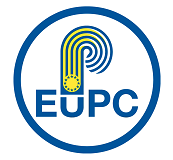History of Plastics
The development of plastics started ,when natural materials like gum, collagen or nitro celluloid were first modified. About 100 years ago the development of plastics begun, the same as we can find nowadays in many applications. As the one of the first inventors we can class Alexander Parkes, British chemist, who presented celluloid for the first time in 1862. The celluloid based on nitrocellulose is colloquially called synthetic ivory.
PVC (Polyvinyl chloride ) was for the first time polymerized between 1838 and 1872 and essentials break down came in 1907, when Leo Baekeland invented Bakelite. This material was the first synthetic plastic used on industrial scale.
Nowadays, at present-day world using of plastics is very popular. During the last a few dozens of years plastics, thanks to their unique properties, became omnipresent . It would be currently difficult to live without them and as a matter of fact excluding them would result in disappearing of many products from clothes, household, medical equipment, not to mention cars and airplanes. Sport cloths and equipment are almost all made from plastics.
We can say, that plastic products are currently inextricably linked with life of human. Looking around , we may see plenty products made of plastics, which are now exist in common language i.e. PVC, gummy, Bakelite, Teflon, polar. Quick technological progress made people can not live without plastics. It was especially noticeable in the last decade of XX century.
Organic substances consist of molecules with various chemical structure. On the one hand there are compounds, which molecules consist of only a few atoms on the other hand there are some, which molecules consist of dozens and even hundreds of thousands of atoms. The mutual feature of macromolecular compounds is that the molecules consist of repeated, but not always the same elements linked together with long chains. The smallest repeated element in the chain of polymer calls mer . The example of polymer compound consisting of the same mers is cellulose (consits only of rests of glucose ) and the example of compound constructed from various mers (amino acids)-proteins. Polymer is made in a process of polimeryzation and polycondesation. Polymeryzation involves such combining of mers,which brings no by-products. Bond formation between mers is accompanied by rapture of double bond. Typical example of such a reaction is the polymerization of ethane. Several mechanisms of polymerization have been known, in which not only can participate yearbooks, but also the cations and anions. Polycondensation is the second type of reaction, will lead to the creation of macromolecular compounds. The essential characteristic defining polycondensation is the formation of the simple by-product, mostly water. This is what happens in the case of the formation of polysaccharides from simple sugars or polypeptides from amino acids.
Nature provides macromolecular substances for man. They can be called natural plastics. Detailed information is available on Plastipedia (http://www.bpf.co.uk/Plastipedia/Default.aspx).


